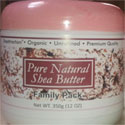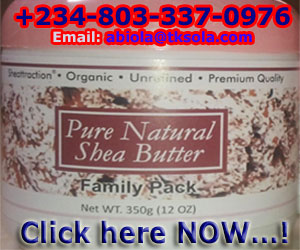Feeding is one critical element that determines how well poultry or any other farm animals perform. It impacts not only on growth rates, but also on the disease resistance of the birds(though protection is also afforded the birds through vaccination/medication regimes). To put it another way, it has been acknowledged that ‘Diet is an important component of the environment under all climatic conditions. The potential of the bird cannot be attained if the environment, and notably the diet, is substandard.
This article is based on excerpts from Tayo’s Practical Livestock Feed Formulation Handbook which is available as an ebook athttp://www.lulu.com/sdaproducts.
It was orginally published as a static HTML page on 29th October 2009
Poultry farming, though potentially lucrative, can be fairly risky if a farmer is not diligent.
Some farmers have recorded severe losses by way of disease outbreaks or dismal productivity resulting from poor feeding among other things.
Apart from the hygiene condition of the environment where poultry are kept, the types of feeds – and manner of feeding – that the birds are subjected to can prove quite critical in determining the ultimate output achieved by a farmer whether in terms of eggs laid, or bird sizes/weight at point of sale. Someone once made an interesting observation to me about practicing poultry producers here in Nigeria.
He pointed out many of these farmers lack formal training in poultry management. However, despite this seemingly serious inadequacy, they successfully feed/manage their birds for profit – which is why they remain in business even today!
Now if that is possible, imagine how much better off they would be in terms of farm productivity (and profits) if they developed a better knowledge/understanding of poultry feedstuffs and ration formulation/compounding!!
Feeding is one critical element that determines how well poultry or any other farm animals perform
It impacts not only on growth rates, but also on the disease resistance of the birds (though protection is also afforded the birds through vaccination/medication regimes).
To put it another way, it has been acknowledged that ‘Diet is an important component of the environment under all climatic conditions. The potential of the bird cannot be attained if the environment, and notably the diet, is substandard.
This is why an understanding of feed ingredients, their composition, and use in ration formulation is CRUCIAL.
Estimates have shown that feeds represent 70 – 75% of the total cost of livestock production – especially poultry and piggery production. Ration formulation is a technique that enhances adaptation of local feed stuffs in compounding rations. It takes into consideration 2 basic concepts:
a. The specific nutrient requirement of different animals.
b. The ingredients of the feed itself.
There is also some specific requirement dependent on the type of animal in question: whether it is monogastric or ruminant. A ruminant animal is one that brings back food from its stomach and chews it again, and which is able to digest cellulose (a complex carbohydrate) with the aid of microorganisms, which live in its intestines e.g. Cow and sheep. A monogastric is one that can is incapable of digesting complex carbohydrates e.g. poultry etc.
Nutrients are chemical substances found in food materials (feeds), which are required for the growth, maintenance, production and health of animals. A balanced ration is one that supplies these nutrients in the right amounts and proportions relative to each other. When rations are well balanced, a smaller quantity is required for most economic efficiency, while greater amounts of a poorly balanced ration will be required to meet the specific production purposes in livestock. These greater amounts constitute expensive wastes, which could have been saved if the rations had been well balanced in the first place.
Poorly balanced rations depress appetite in animals leading to poor performance, and high susceptibility to infection and disease. In carrying out ration formulation, we study the daily nutrient requirements of different animals, and compare with the composition of available feed ingredients. We then manipulate the latter to meet the needs for satisfactory productivity either in terms of meat, milk or egg production.
Four (4) Major Groups of Feed Ingredients For Ration Formulation
3.1FEED INGREDIENTS
Feed ingredients are basically grouped as follows:
3.1.1ENERGY SOURCES (CARBOHYDRATES)
The energy in poultry diets is derived mainly from cereals. Typically, maize, millet, sorghum, rice and wheat are locally available/used in compounding poultry rations. Others include Guinea Corn as well as non-cereals like Cassava and Sweet Potatoes. Incidentally, it has been reported that non-cereal carbohydrates like Cassava can be used for up to 5- – 60% of growers’ and layers’ diets without detrimental effects on the performance of the birds.
Studies have also shown that sweet potatoes and cassava have better metabolisable energy values than coco yam, and yam, when they are included in chick diets. The downside to their use is however the need for some processing as well as their relatively lower protein content.
Different types of oils usable in supplying energy in poultry rations include palm oil, melon-seed oil, groundnut oil, and palm-kernel oil. Others sources are Lard (a firm white substance made from the melted fat of pigs and used in cooking) and Molasses (a thick, dark sweet liquid obtained from sugar while it is being refined – though this has been found to be a poor substitute for maize in chick diets).
There are also other by-products like biscuit crumbs, broken wheat (wheat offal), broken rice (rice bran) etc. Apart from supplying energy, they are also required for body heat maintenance. Carbohydrate deficiency in the diet will cause poor growth rates in chicks.
Some industrial by-products that are locally utilized for supplying energy in feed formulation in Nigeria include wheat offal, rice husk, dried brewer’s grain and cocoa husk. Other by products include yam peels and cassava peels.
3.1.2PROTEIN SOURCES
a.Plant origin: GroundNut Cake(GNC), Soya Bean Meal(SBM), Cotton Seed Cake, Whole Soya Beans, Palm Kernel Cake (PKC), Rubber Seed Meal (RSM), Sunflower Seed Cake.
b.Animal origin: Blood Meal; Meat Meal, Fish Meal (FM), Brewer’s Dried Grain (BDG) i.e. Spent Grains, yeast, hydrolysed feather meal, chicken offal etc
It is note worthy that proteins of animal origin have higher protein content between 80 – 85% and a higher quantity of the most limiting amino acids (AA) i.e. have higher Methionine and Lysine content than those of plant origin. Protein is used for synthesis of body tissues making it useful in growth, body repairs and egg formation processes. Its deficiency can lead to poor growth/feathering and development of vice habits among the birds.
It is pertinent to note here that the component parts of proteins i.e. Amino Acids (AAs) – rather than protein itself – are of greatest nutritional importance to poultry feeding. About 20 AAs exist – some can be synthesized readily and sufficiently in the fowl’s body (Non-Essential AAs) and some cannot (Essential AAs).
Table 3.1.2 below gives a summary of all the Amino Acids:
ESSENTIAL AMINO ACIDS
Arginine
Cystine
Histidine
Isoleucine
Leucine
Lysine
Methionine
Phenylalanine
Threonine
Tryptophan
Tyrosine
Valine
NON-ESSENTIAL AMINO ACIDS
Alanine
Aspartate
Glycine
Hydroxproline
Proline
Serine
Balancing Amino-Acids in Rations
It has been said that in order to achieve reasonable amino acid balance, the amino acid content of a ration should be calculated or analysed. Based on the analysis, Fish Meal for instance, has been found (like other intact proteins) to be rich in all amino acids, and as such can be used to rectify amino acid deficiency. Also, it offers the additional benefit of furnishing minerals, vitamins, and possibly essential fatty acids.
Synthetic amino acids make it possible to achieve good amino acid balance in compounded feeds, without resorting to the use of animal proteins. However it is fairly common practice for synthetic amino acids (e.g. feed grade methionine) to be used in combination with intact proteins – especially since the former tend to be expensive.
3.1.3 MINERAL SOURCES
Minerals enable skeletal tissue development and maintenance in poultry. They also make up a good proportion of the egg and help physiological functions. Mineral sources that are available locally are oyster shell, seashells and limestone as sources of Calcium (Ca) while bone meal or defluorinated rock phosphate serve as sources of Phosphorous (P).
A gradual rise over the years in the price of bone meal has resulted from the reduction in the number of cattle slaughtered, and a consequent increase in bone consumption by humans – due to prices of meat rapidly becoming unaffordable to the majority of the population.
The foregoing situation resulted in attempts to explore the use of other sources such as Rock phosphate. Available results caution that in using this source, the attention should be paid to dangers posed by its fluoride content. Other sources of minerals include fertilizers e.g. single phosphate and super phosphate. Deficiency of mineral salts in diets can reduce egg production, and has been suspected to predispose birds to cannibalism.
3.1.4. VITAMIN SOURCES
The discovery of vitamins made intensive poultry farming possible. This is a situation where birds are successfully kept for long periods without access to pasture or direct sunlight. Vitamins are organic compounds not synthesized in the body, but required in small amounts. They function mostly as co-enzymes or regulators of metabolism.
The sources of vitamins available locally include some plant sources e.g. Alfalfa, Luru (dried leaves of Adansonia digitata) and Eupatorium, which are sources of carotene and palm oil. Vitamins are given in synthetic form, which is often preferred to the natural sources, due to the former’s standard quality, and proven effectiveness.
This article is based on excerpts from Tayo’s Practical Livestock Feed Formulation Handbook which is available as an ebook athttp://www.lulu.com/sdaproducts. Visit Tayo’s Self-Development Nuggets™ blog to find out how you can get your FREE copy of his new Practical Guide to Important Feed Ingredients (with high resolution pictures, prices, nutrients, uses etc).









Warning: count(): Parameter must be an array or an object that implements Countable in /home1/tayoswdg/public_html/sdnuggets/wp-includes/class-wp-comment-query.php on line 399